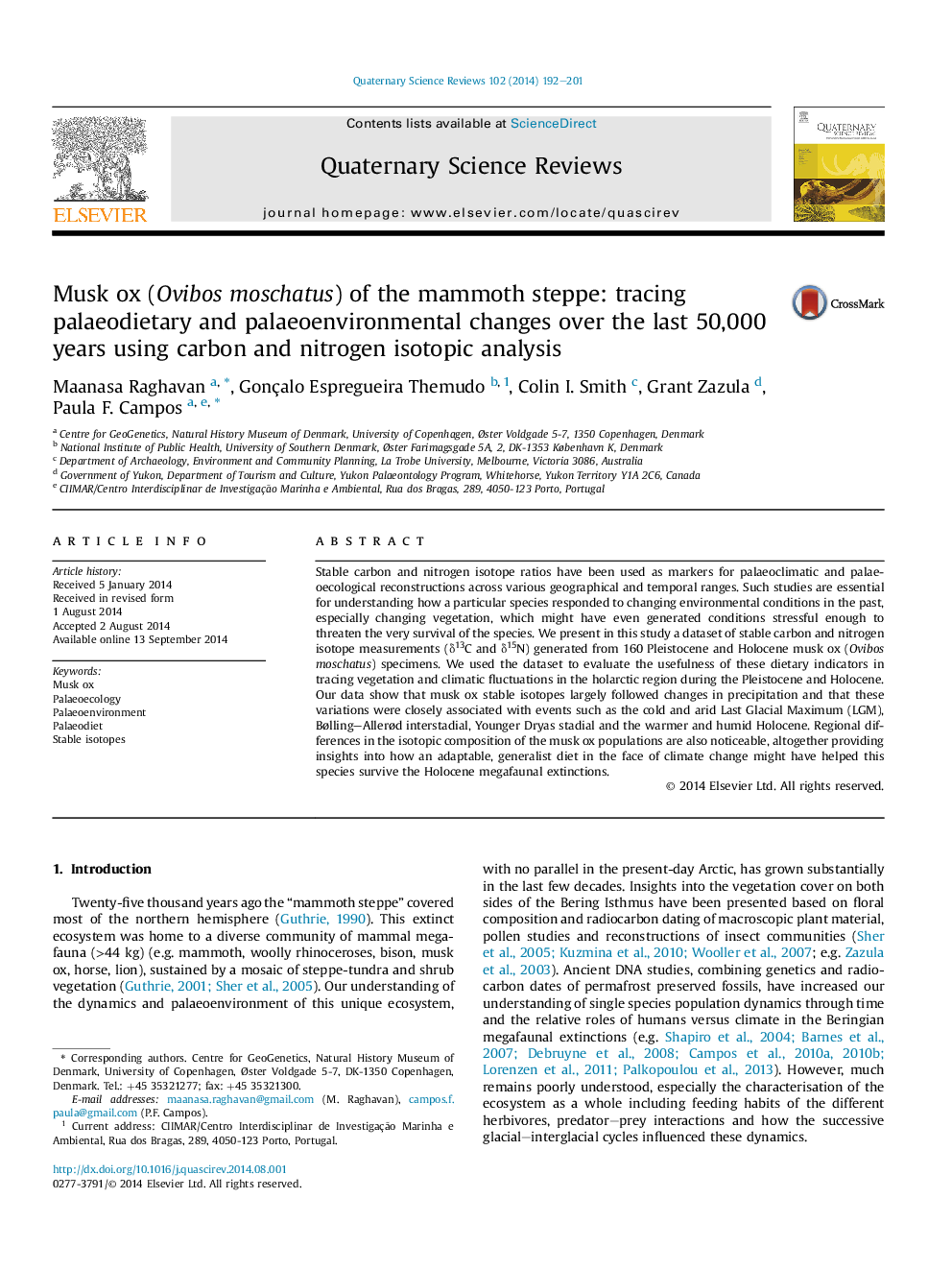| کد مقاله | کد نشریه | سال انتشار | مقاله انگلیسی | نسخه تمام متن |
|---|---|---|---|---|
| 4735329 | 1640832 | 2014 | 10 صفحه PDF | دانلود رایگان |

• One of the largest palaeodietary studies based on single-species isotopic analysis.
• δ13C and δ15N values from 160 Holarctic-distributed musk oxen beyond radiocarbon age to the present.
• Noticeable regional and temporal changes in the musk ox δ13C and δ15N values.
• During the Pleistocene-Holocene transition, musk ox likely faced more drastic humidity changes in Canada than in Taimyr.
• Adaptable, generalist diet of the musk ox might have offered resistance against Holocene extinctions.
Stable carbon and nitrogen isotope ratios have been used as markers for palaeoclimatic and palaeoecological reconstructions across various geographical and temporal ranges. Such studies are essential for understanding how a particular species responded to changing environmental conditions in the past, especially changing vegetation, which might have even generated conditions stressful enough to threaten the very survival of the species. We present in this study a dataset of stable carbon and nitrogen isotope measurements (δ13C and δ15N) generated from 160 Pleistocene and Holocene musk ox (Ovibos moschatus) specimens. We used the dataset to evaluate the usefulness of these dietary indicators in tracing vegetation and climatic fluctuations in the holarctic region during the Pleistocene and Holocene. Our data show that musk ox stable isotopes largely followed changes in precipitation and that these variations were closely associated with events such as the cold and arid Last Glacial Maximum (LGM), Bølling–Allerød interstadial, Younger Dryas stadial and the warmer and humid Holocene. Regional differences in the isotopic composition of the musk ox populations are also noticeable, altogether providing insights into how an adaptable, generalist diet in the face of climate change might have helped this species survive the Holocene megafaunal extinctions.
Journal: Quaternary Science Reviews - Volume 102, 15 October 2014, Pages 192–201